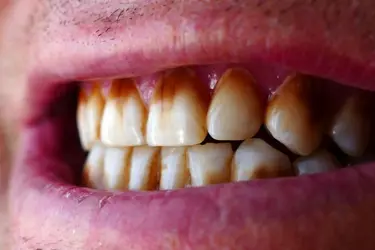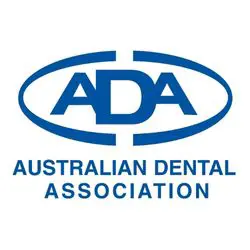
Key messages
- Dental practitioners are best placed to diagnose the reason for tooth discolouration.
- Stains that are on the outside surface of the tooth are called extrinsic stains.
- Stains that are inside the tooth are called intrinsic stains.
- Stains inside a tooth can be very difficult to remove by treating the outside of the tooth and may need treatment form the inside.
There are many reasons why teeth may be discoloured. Dental practitioners are best placed to diagnose the reason for tooth discolouration and provide advice on whether tooth whitening will be an effective treatment.
What causes tooth staining?
Coffee, tea and red wine are major causes of staining. The intense colour pigments of these drinks are called chromogens. The chromogens attach to the white tooth enamel causing it to look darker.
The chemicals tar and nicotine in tobacco can cause teeth to become a yellowish colour.
As you get older, the white tooth enamel layer of teeth can become thinner. This lets the dentine on the inside of the teeth to show though and make the tooth look dark.
Some medications can cause tooth staining. Taking certain antibiotics when the adult teeth are developing under the gums can cause these teeth to be stained. For example, taking tetracyline and doxycyline when pregnant or as a baby.
Injury to the teeth can cause the affected tooth or teeth to become darker over time. The injury can cause the tooth to create more dentine to protect the dental pulp. This can make the tooth look darker. Trauma can also cause blood from inside the tooth to leak into the surrounding tooth structure making it appear discoloured.
Staining outside the tooth
Stains that are on the outside surface of the tooth are called extrinsic stains. These stains can be caused by tea, coffee, red wine and smoking. You might be able to remove this staining by brushing your teeth with a whitening toothpaste, or by getting a professional dental cleaning or teeth whitening treatment.
Research also shows children who swim more than 6 hours per week are at more risk of teeth staining.
Staining inside the tooth
Stains on the inside of the teeth are called intrinsic staining. This staining might be caused by:
- medications taken during tooth development
- trauma to the tooth
- amalgam fillings
- root canal treatment.
Stains that are inside a tooth can be very difficult to remove by treating the outside of the tooth. Sometimes, treating the tooth from the inside is an option. This is called internal bleaching.
What is internal bleaching?
If your teeth have been injured and you have had a root canal treatment, your tooth might look discoloured. This is an example of when a tooth can be treated from the inside.
A whitening gel is placed in the centre of the tooth where the dental nerve was located before it was removed by the root canal treatment. The whitening gel is left inside the tooth for several days before being cleaned out. Sometimes the gel might need to be put inside the tooth again. Once your tooth is whiter, the tooth is fixed with a filling.
This treatment can only be done by a dental professional. This treatment may be followed by a crown or veneer treatment.


